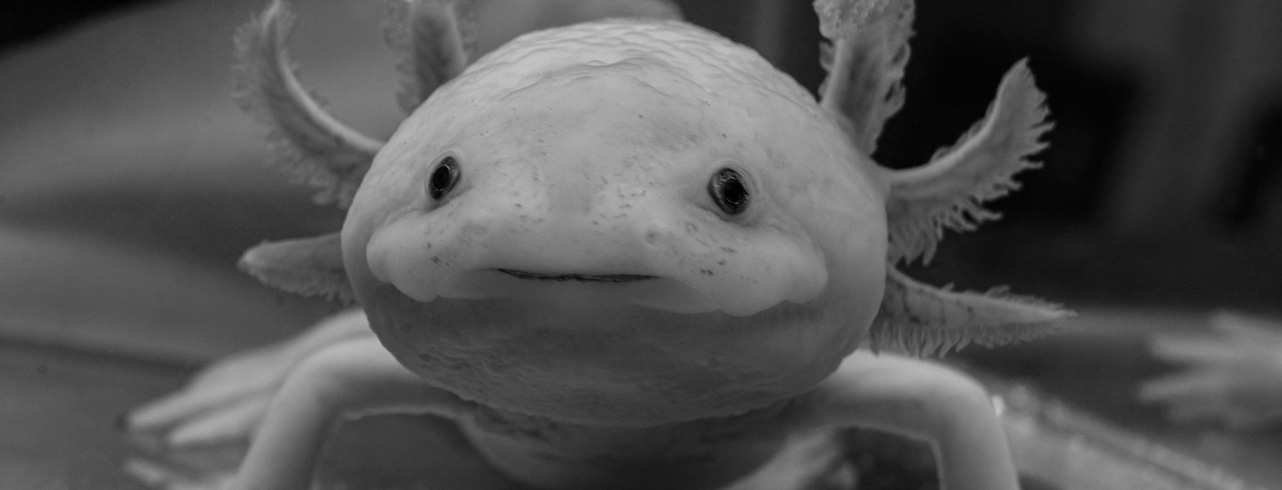If you’re like my eight-year old daughter then you are likely well aware of the axolotl (pronounced ak·suh·laa·tl). If not, here’s a quick summary on this sort-of-Salamander.
An axolotl is a rare, aquatic salamander known for its feathery gills, perpetual smile, and get this…an incredible ability to regenerate limbs.Native to Mexico, it’s often called the “Mexican walking fish”—though it’s not a fish at all!
First, let me start by saying that I have no idea where the axolotl craze came from. My daughter’s interest, however, appears to have surged in December 2024, right around the time the term “Axolotl” peaked in popularity on Google Trends (see below).
It should also be noted, the term also peaked in popularity in March 2025 — probably around the same time myself and other parents and caregivers started trying to figure just exactly what these things were.
Regardless of who, how or what led my little one on to this lovable creature — I suddenly found my home overrun with the amphibian. Simple drawings on the fridge turned into stuffed animals (see right) turned into animatronic Axolotls that can swim in water. Ok you get it.
So what’s the connection to brands and marketing?
An Axolotl’s ability to thrive so uniquely and bounce back with its legendary powers of regeneration make it the perfect a metaphor for marketers — one loaded with lessons around resilience, innovation, and adaptability.
So, here we go…
Marketing Lessons from an Axolotl
Regrow, Reinvent, Repeat
Axolotls are remarkable amphibians known for one extraordinary trait: their ability to regenerate lost body parts — limbs, spinal tissue, even parts of their heart and brain—without scarring.
For brands in a fast-moving and highly competitive marketplace, the ability to regrow — to pivot, reinvent, and restore — is essential.
Just like an axolotl regenerates a limb after injury, brands must recover quickly from missteps — product flops, missed trends, PR misfires — and emerge stronger and more polished.
Precision Regrowth = Strategic Reinvention
Axolotls don’t grow random body parts—they regrow exactly what’s lost, thanks to a biological “GPS” known as retinoic acid,” which acts like a molecular GPS, forming a gradient that gives cells positional cues and informs regenerating tissues whether to grow a hand, an elbow, or a shoulder.

It’s pretty incredible. This trait is so incredible in fact, scientists are studying it to better understand how we might one day enhance human healing or regeneration.
So, for brands looking to launch a product or a campaign ( or bounce back from the aforementioned misstep) it’s crucial to act like an axolotl — aka understand precisely what your customers want (or where you went wrong) and tailor solutions to fill those gaps.
You can do exactly that by monitoring key metrics, implementing A/B testing, obsessing over customer feedback, and more. Smart brands pinpoint weak points and restore customer loyalty or product-market fit exactly where it’s needed.
Zero-Scar Healing = Brand Resilience
Unlike humans, axolotls regenerate without scarring. Legit, no scars. Unlike humans who form scar tissue during the healing process, axolotls “maintain juvenile-like cells throughout their lives that allow them to regenerate tissue perfectly without scarring.”
For brands, scars can be past mistakes, past campaigns, past anything that has become part of your narrative — but you don’t want it to define you. Implementing processes to transform these missteps or errors into an upside for your brand can help lead to lessons learned and avoid leaving lasting damage.
From a dissatisfied customer interaction to a bad email send, it’s crucial for brands to find ways to embrace tansparent apologies, authentic fixes, and creative pivots that heal consumer trust — and sometimes even boost brand credibility.
Eternal Youth = Constant Adaptation
Axolotls exhibit neoteny: they retain juvenile traits their whole lives, keeping them agile, curious, and adaptable. The lesson? It’s simple.
Brands shouldn’t grow complacent.
Staying youthful — experimenting, evolving, taking risks — means never losing the instinct to try new channels, campaigns, or collaborations.
Stockpiled Potential = Prepared for Action
Trying not to get too scientific here — but an Axolotl contains ultra‑sensitive mTOR switches and stockpiled mRNAs, which can trigger regeneration instantly. Talk about being proactive.
Similarly, brands must be prepared with flexible systems, no matter if it’s jumping on an massive ongoing trend on TikTok or bringing in the best and most versatile talent available.
Embracing the axolotl’s regenerative superpowers means building a marketing organization that never stays down. You pivot where necessary, heal with purpose, and evolve without losing identity.
In today’s dynamic landscape — where platforms shift, audience preferences evolve, and unexpected challenges emerge — brands that regenerate as effectively as axolotls don’t just survive. They thrive.
That’s why every brand should be an Axolotl in marketing: ready to restore, reimagine, and rise again, stronger than before.
How to Go Full Axolotl in Marketing
| Axolotl Trait | Brand Application |
|---|---|
| 🔄 Regeneration | Bounce back from setbacks — product issues, negative feedback, market shifts. |
| 📍 Precision regrowth | Use data to identify and fix weak spots — customer service, messaging, distribution. |
| 🧼 Scar-free healing | Turn mistakes into trust-building opportunities with transparency. |
| 🌱 Neoteny/youth | Keep testing new ideas — social media, experiential campaigns, brand partnerships. |
| ⚙️ On‑demand readiness | Maintain flexible marketing infrastructure ready to respond fast. |
